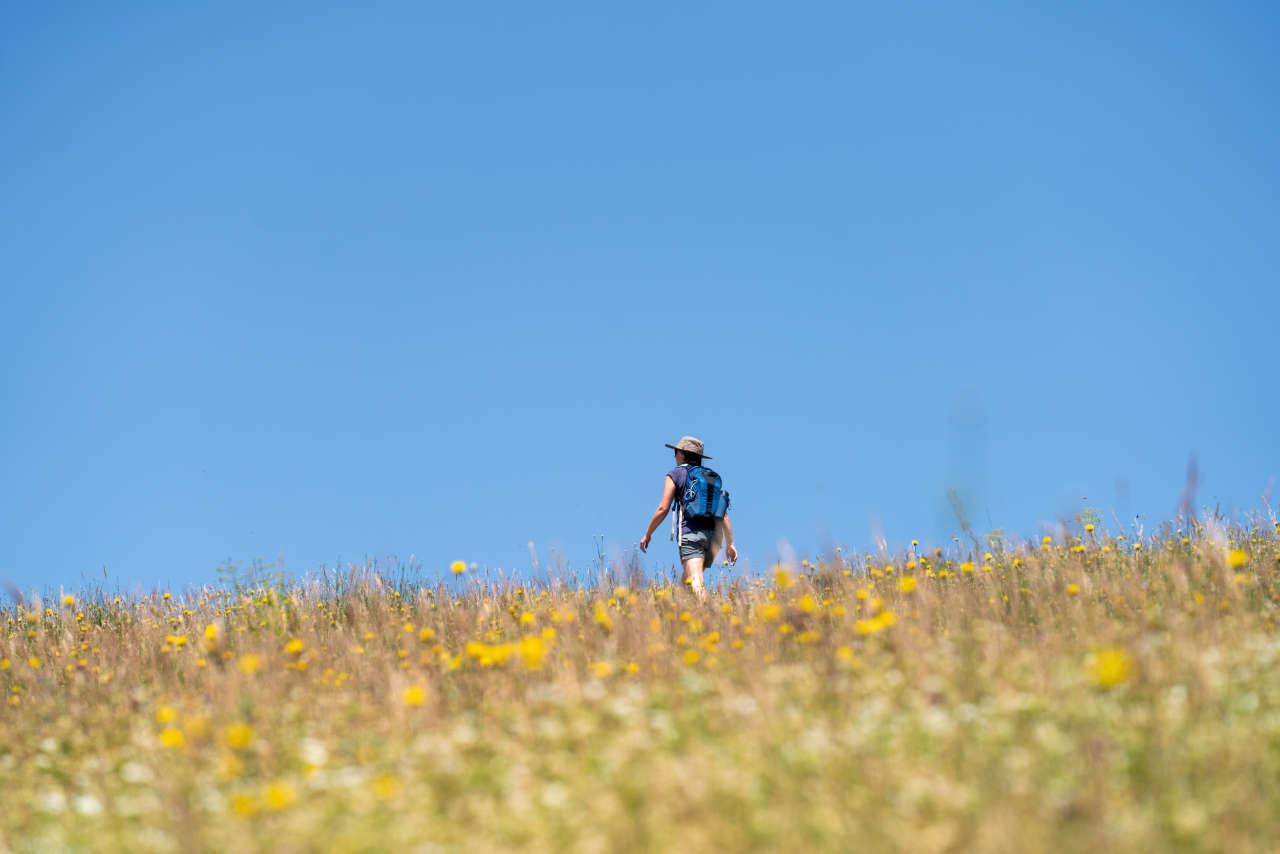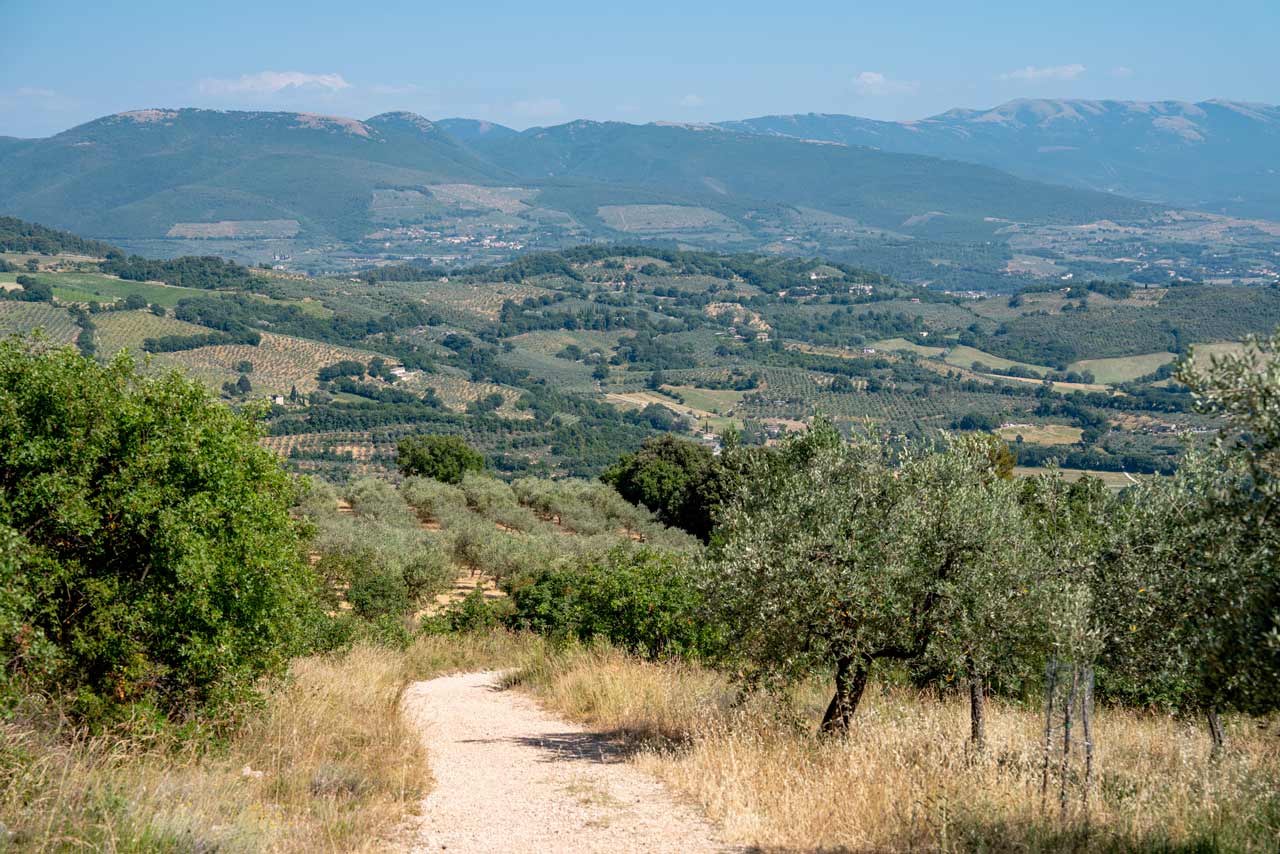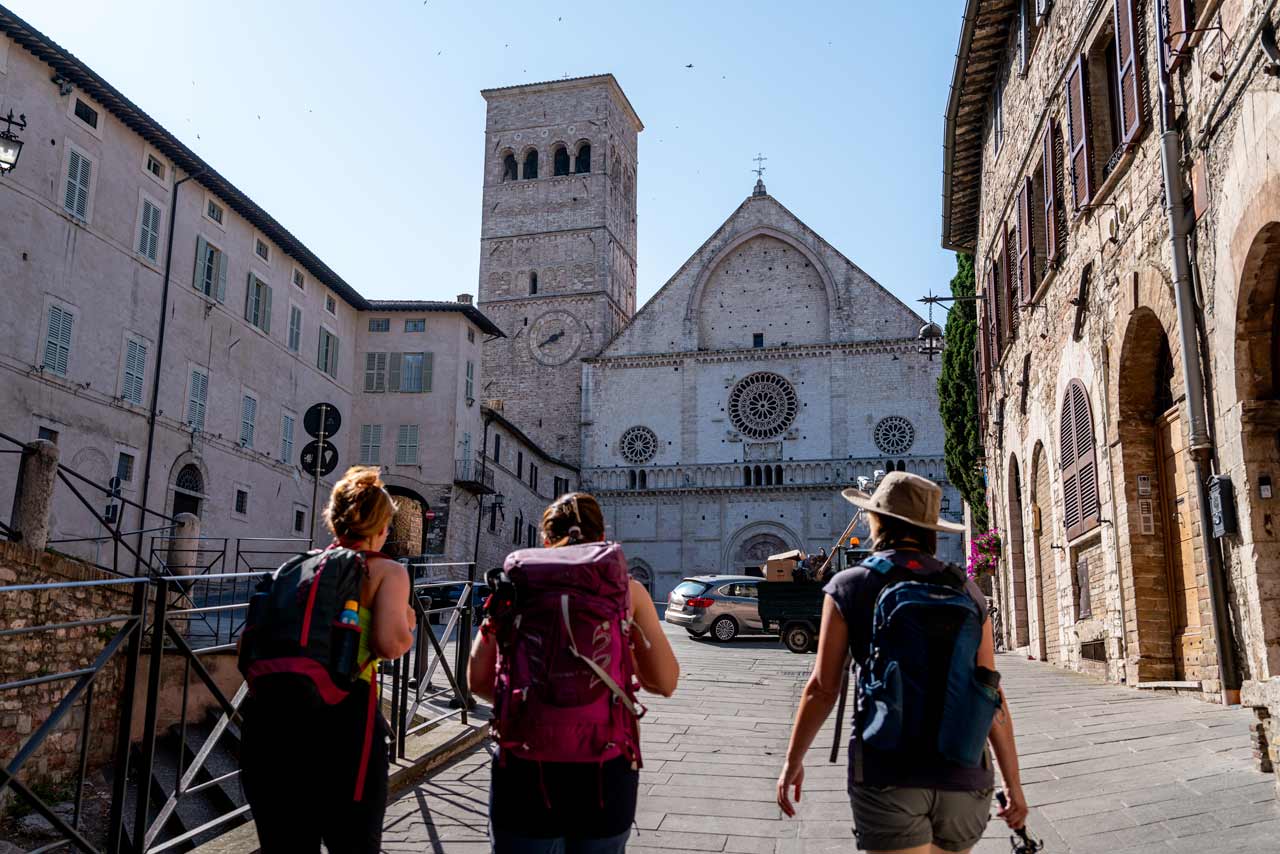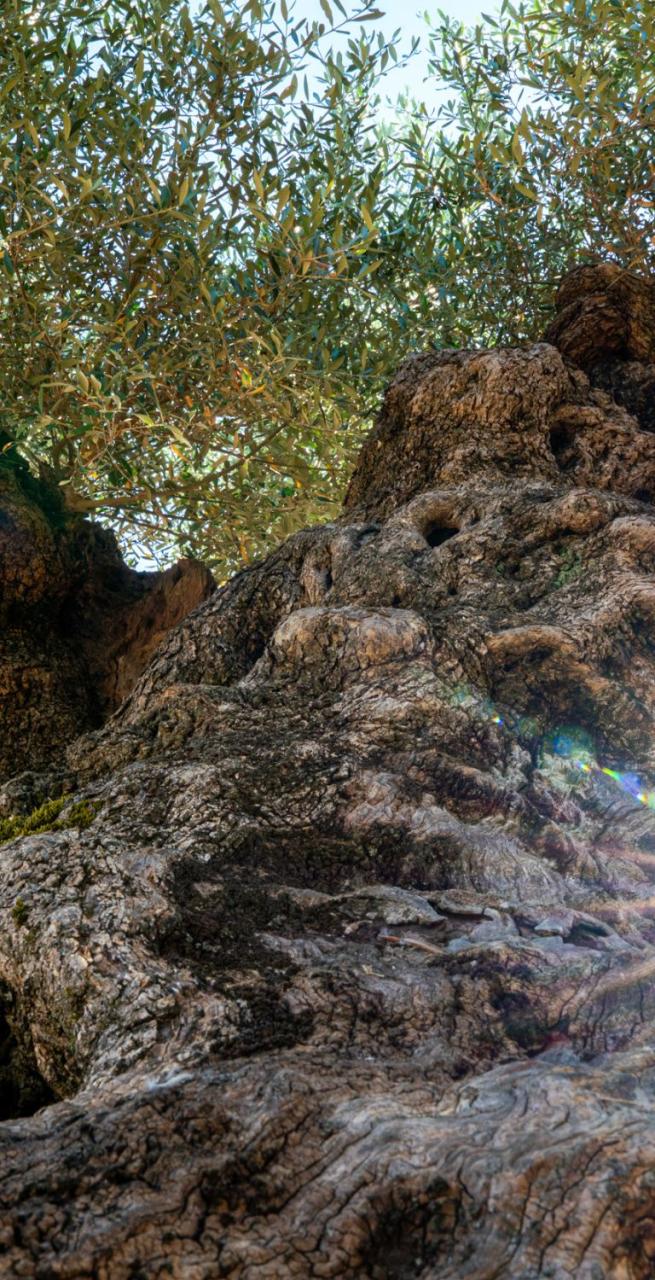Walking Italy’s Great Pilgrimage Routes: The Via Francigena and the Way of St. Francis
30 Sep 2025
When it comes to long-distance walking in Italy, two names often stand out: the Via Francigena and the Way of St. Francis. At first glance, they might seem very similar – both are routes with deep roots in history, both end in Rome, and both invite you to slow down, reconnect with yourself, and cross landscapes that are rich in beauty and meaning. Even their names sound alike, which often causes confusion (even among Italians!).
But while they share common ground, they are also very different paths, each with its own character and atmosphere. Choosing one over the other can be a straightforward decision, or it can take a little reflection. That’s because the differences range from subtle shifts in vibe to major contrasts in history, length, and landscapes.
Our goal here is to help you understand both what they have in common, and what makes each one unique – so that you can choose the route that best matches your pace, your interests, and your idea of the perfect journey on foot.
What They Have in Common
Despite their different origins, the Via Francigena and the Way of St. Francis share important traits:
- Recognized “Cammini”: Both are officially structured long-distance trails, with defined stages, guidebooks, and a credential that can be stamped along the way. Whether you prefer carrying everything in a backpack or enjoying a bit more comfort with luggage transport and well-chosen accommodations, both routes can be tailored to the way you want to travel.
- The spirit of walking: While these paths are historically pilgrim routes, today most people walk them for reasons that go far beyond religion. They are chosen by those who want to slow down, rediscover the joy of simple movement, and spend meaningful time either with themselves or with others. The act of walking becomes meditative, a way to disconnect from everyday rush and reconnect with nature, culture, and inner rhythm.
- Cultural immersion: Along both routes, history is never far away. You’ll find ancient churches and monasteries, medieval towns, and timeless villages. There are world-famous art cities and also quiet corners that rarely make it into guidebooks. Walking these trails means not just crossing landscapes, but stepping into the living heritage of Italy.
- Changing landscapes: From mountain passes to valleys, from forests to rolling hills, both offer a constant variety of scenery. Each day feels new, and the changing seasons add even more richness. These are not repetitive routes, but ever-evolving journeys where the landscape itself becomes a companion.
- The rhythm of slow travel: Perhaps their greatest gift. Both routes remind us that travel isn’t about rushing from one place to the next, but about savoring the journey step by step. Walking allows you to notice details you’d miss otherwise – the scent of wildflowers, the quiet of a forest path, the warm welcome in a small inn.
A Note on Their Names
The similarity of the names often raises curiosity. The Via Francigena means “the road coming from the land of the Franks,” referring to the medieval pilgrims who traveled from France and beyond. The Way of St. Francis instead is directly tied to St. Francis of Assisi, tracing the places of his life and legacy. One name speaks of a vast European network, the other of a more personal, place-centered journey.

The History of the Via Francigena
The Via Francigena is one of the great medieval pilgrimage routes of Europe, documented since the 10th century.
- Origins: It linked Canterbury in England to Rome, and for many, continued onward to Jerusalem. Its name reflects the many travelers from France and northern Europe who took this road south.
- Sigeric’s diary: Our best knowledge of the route comes from Archbishop Sigeric of Canterbury, who in 990 described his 79 stages on the way back from Rome. His notes remain the foundation of today’s path.
- Beyond religion: The Francigena wasn’t just a pilgrim road. It was also a commercial and cultural artery, carrying merchants, ideas, and traditions across borders.
- Destination: For medieval travelers, the main goal was the tomb of St. Peter in Rome – one of the three great pilgrimage destinations of Christianity alongside Santiago de Compostela and Jerusalem.
- Today’s legacy: Now it is recognized as a Council of Europe Cultural Route, not just a religious path but a symbol of shared European identity and memory. Walking it is to retrace the steps of generations who shaped the continent’s history.
The History of the Way of St. Francis
The Way of St. Francis is a more recent route, but one deeply inspired by medieval history and the figure of Italy’s most beloved saint.
- Francis of Assisi: Born in 1182, he abandoned wealth for a life of humility, simplicity, and care for creation. His vision changed spirituality and still resonates today – whether you are religious or not.
- Sacred places: The route connects the most important places in his life: La Verna, where he received the stigmata; Assisi, his hometown and the heart of Franciscan devotion; Spoleto, where he heard his calling; Greccio, where he created the first nativity; and Rieti’s sacred valley. It ends, like the Francigena, in Rome.
- Origins of the route: Unlike the Francigena, this was not a medieval road. It was reconstructed in recent decades by historians and associations to unite these Franciscan sites into one continuous itinerary.
- Experience: More than a historical walk, the Francis Route is a chance to connect with values of simplicity, closeness to nature, and inner peace. Even if you are not religious, the atmosphere of places like Assisi or La Verna is undeniably moving.
Geography and Landscape
- Via Francigena: A true European journey. From Canterbury, it crosses England, France, Switzerland, and Italy. Within Italy, it passes through seven regions – from the Valle d’Aosta mountains to the plains of Lombardy, the vineyards of Tuscany, the rolling Lazio hills, and on toward Rome. Some walkers even continue south to Puglia, as pilgrims once did on their way to the Holy Land. The variety of landscapes is extraordinary – a journey from the Alps to the Mediterranean.
- Way of St. Francis: Entirely Italian. Starting in Florence or La Verna, it winds through Tuscany, Umbria, and Lazio. These are the regions known as Italy’s “green heart,” rich in forests, olive groves, and hilltop towns. The atmosphere is gentler, more intimate – less about covering huge distances, more about sinking into the rhythm of central Italy’s nature and traditions. Unlike the Francigena, it doesn’t cross all of Italy but focuses on its spiritual core.

Length and Sections
- Via Francigena: Over 2,000 km from Canterbury to Rome, about 1,000 within Italy, and nearly 1,800 if extended south to Brindisi. Most people walk shorter sections of one to two weeks, which are easier to fit into everyday life. Tuscany and the last stage to Rome are particularly popular. The official stages can be long, but we (as tour experts) split them into approachable days of around 20–24 km, making the experience more enjoyable and sustainable.
- Way of St. Francis: Around 500 km from Florence to Rome, making it more manageable for a complete walk in one journey. Like the Francigena, it can also be divided into shorter stages of a week or so. The terrain is hillier, with steeper climbs and descents, but the reward is more solitude, breathtaking views, and an even stronger sense of connection to the landscape.
Atmosphere and Spirit
- Via Francigena: Wide in scope, international in feel. It is Italy’s great answer to the Camino de Santiago – an iconic route that attracts walkers from all over the world. Some stretches, like Tuscany and the final approach to Rome, are lively and social; others, such as the northern plains, offer quieter days. Its character shifts as you move along, always offering variety.
- Way of St. Francis: More intimate, more contemplative. The route feels infused with a particular energy, shaped by its landscapes and its history. Assisi, La Verna, Spoleto – even without religious faith, these places radiate something unique. It’s a journey that invites reflection, silence, and the joy of being immersed in nature.

Famous Stops
- Via Francigena: Canterbury, Lausanne, the Great St. Bernard Pass, Fidenza (a hidden jewel), Pavia, Lucca, Siena, Viterbo, and Rome. Each of these cities is rich in history, but some of the most memorable experiences often come from the smaller villages in between, where authenticity is at its strongest.
- Way of St. Francis: Florence, La Verna, Sansepolcro, Città di Castello, Gubbio, Assisi, Spoleto, Rieti, Greccio, and Rome. These towns and villages are the heart of Tuscany and Umbria, less famous than Siena or Lucca, but deeply atmospheric. Walking here feels like discovering hidden corners of Italy’s green heart.
Popularity and Infrastructure
- Via Francigena: Better known internationally, especially since the post-Covid revival of walking travel. Infrastructure is stronger: more accommodations (from simple hostels to comfortable hotels), more services such as luggage transfers, and well-marked trails. But it is not as crowded as the Camino de Santiago, and advance booking is still recommended.
- Way of St. Francis: Less crowded and still developing. Some stretches offer plenty of accommodations, others are more limited – which adds to the feeling of authenticity but also requires planning. For travelers who want the peace of mind of knowing that everything is organized, a guided package ensures comfort without losing the magic of the experience.
The Different Vibes
- Via Francigena: A grand, diverse, European route – cosmopolitan, historic, and iconic. Walking it feels like being part of a cultural journey that connects countries and centuries.
- Way of St. Francis: A quiet, deeply Italian journey – rooted in the green heart of Italy, infused with reflection, simplicity, and nature.
Choosing Your Path
If you’re drawn to a broad, iconic route that crosses much of Italy and offers variety, history, and encounters along the way, the Via Francigena is the perfect choice.
If you’d prefer a more intimate, contemplative journey through forests, hills, and villages that still echo with Francis’ presence, the Way of St. Francis will speak to you.
Both routes offer something precious: the chance to slow down, discover Italy in depth, and live the road step by step. And whichever you choose, you’ll be walking not just through landscapes, but into stories, traditions, and a deeper rhythm of life.
DISCOVER THE ST. FRANCIS WAY
DISCOVER THE VIA FRANCIGENA
`






